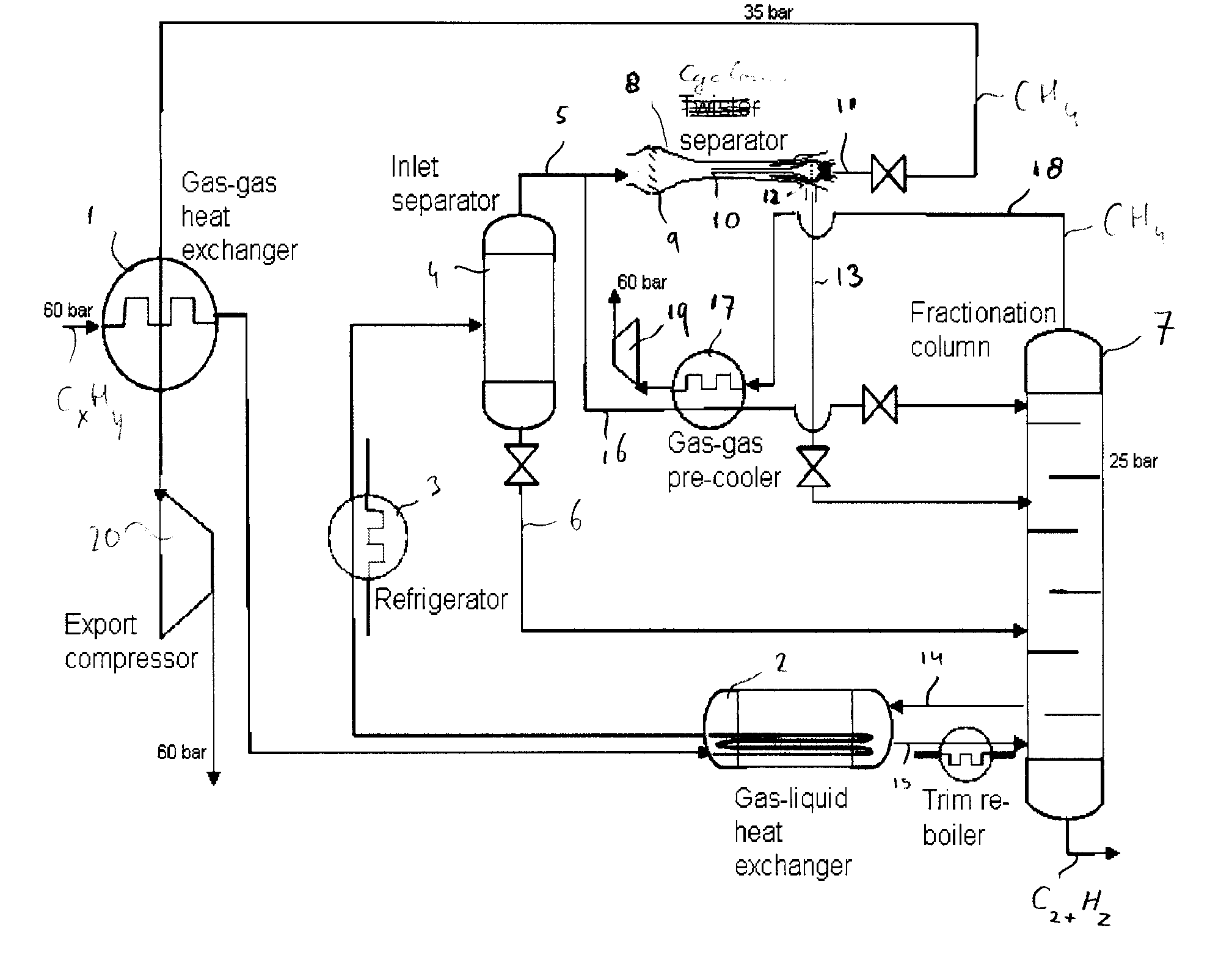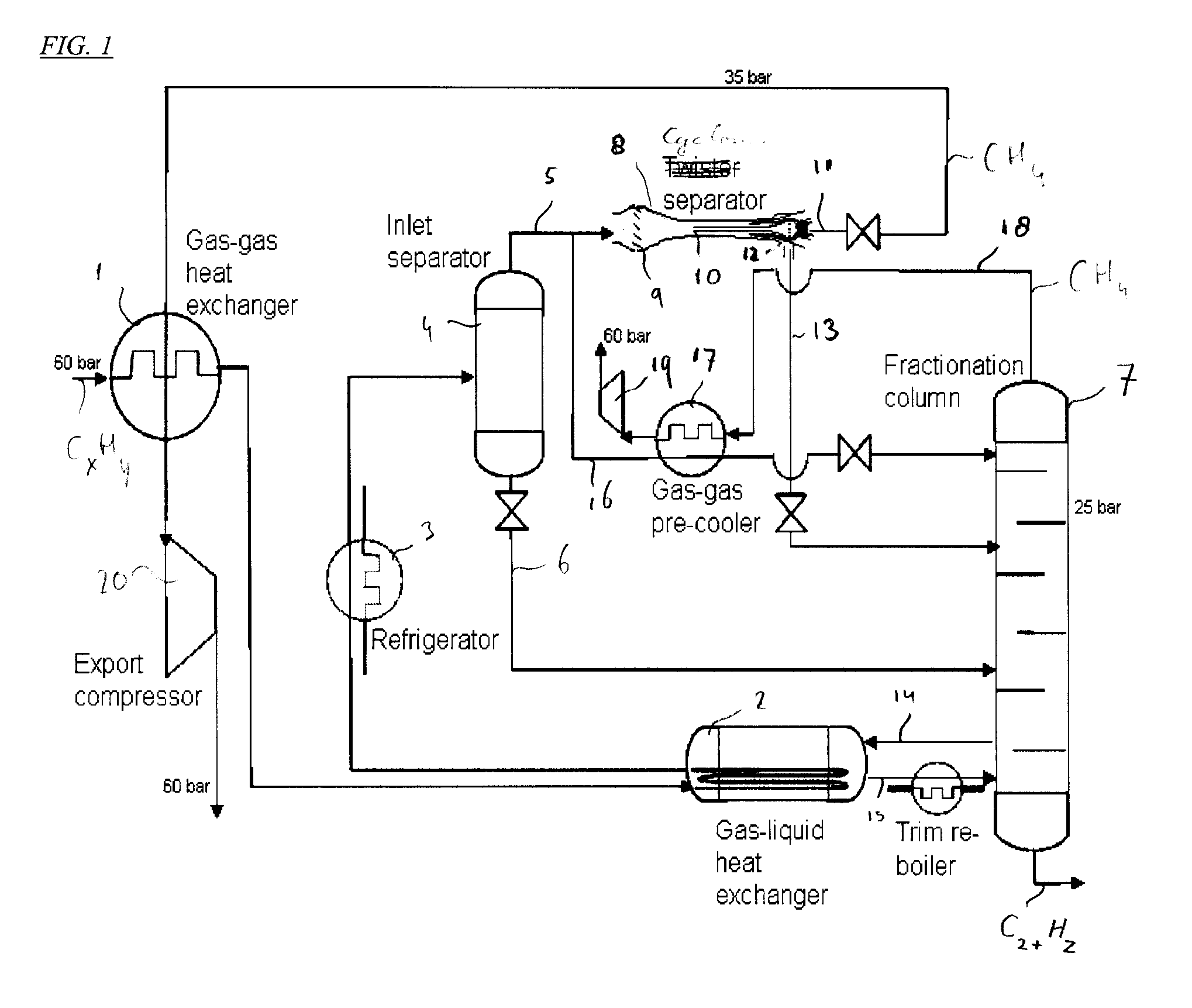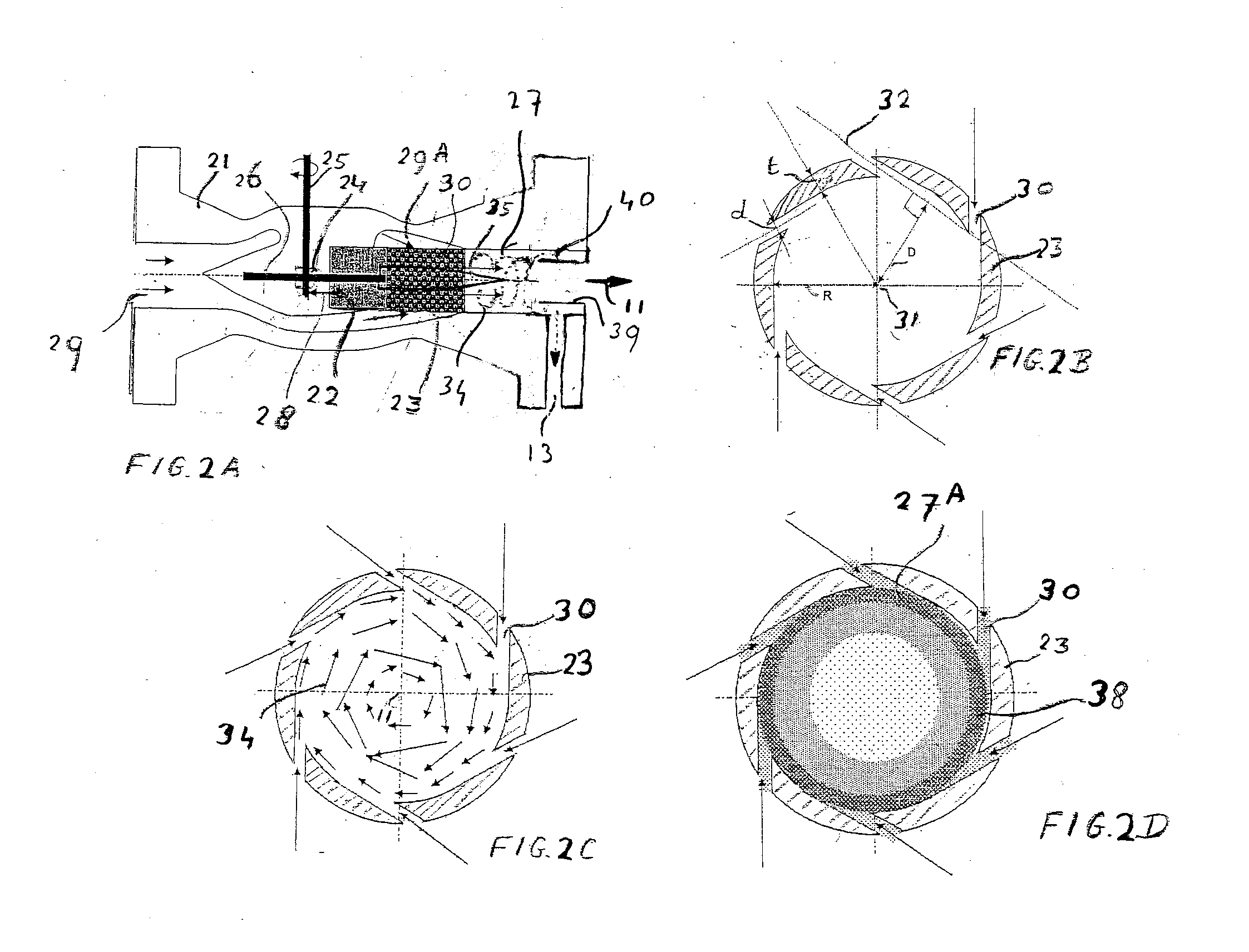Method and System for Cooling a Natural Gas Stream and Separating the Cooled Stream Into Various Fractions
a technology of natural gas and cooling stream, which is applied in the direction of liquefaction, lighting and heating apparatus, separation processes, etc., can solve the problems of bulky and expensive cooling and refrigeration devices, limited gas heating value, and inability to justify expensive gas transmission grids
- Summary
- Abstract
- Description
- Claims
- Application Information
AI Technical Summary
Benefits of technology
Problems solved by technology
Method used
Image
Examples
Embodiment Construction
[0029]FIG. 1 illustrates a flow scheme of a method and system according to the invention for cooling and fractionating a natural gas stream.
[0030]A natural gas stream CxHy is compressed from about 60 bar to more than 100 bar in a feed compressor 20 and initially cooled in an air cooler 21 such that the natural gas stream has a pressure of about 100 bar when it enters a first gas-gas heat exchanger 1. The natural gas stream is subsequently cooled in a second heat exchanger 2 and thereafter in a refrigerator 3. The cooled natural gas stream discharged by the second heat exchanger 2 is separated in an inlet separator 4 into a methane enriched fraction 5 and a methane depleted fraction 6.
[0031]The methane depleted fraction 6 is fed into a fractionating column 7, whereas the methane enriched fraction 5 is fed into a cyclonic expansion and separation device 8.
[0032]The cyclonic expansion and separation device 8 comprises swirl imparting vanes 9, a nozzle 10 in which the swirling fluid mix...
PUM
| Property | Measurement | Unit |
|---|---|---|
| temperature | aaaaa | aaaaa |
| temperature | aaaaa | aaaaa |
| isentropic efficiency | aaaaa | aaaaa |
Abstract
Description
Claims
Application Information
 Login to View More
Login to View More - R&D
- Intellectual Property
- Life Sciences
- Materials
- Tech Scout
- Unparalleled Data Quality
- Higher Quality Content
- 60% Fewer Hallucinations
Browse by: Latest US Patents, China's latest patents, Technical Efficacy Thesaurus, Application Domain, Technology Topic, Popular Technical Reports.
© 2025 PatSnap. All rights reserved.Legal|Privacy policy|Modern Slavery Act Transparency Statement|Sitemap|About US| Contact US: help@patsnap.com



